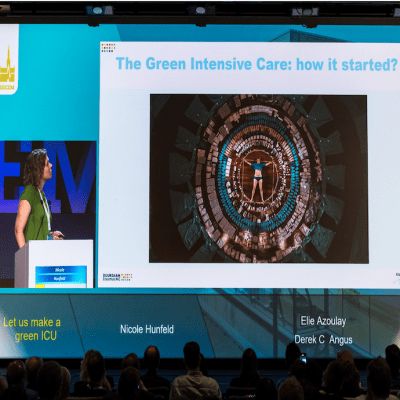Consultant Anaesthetist Dr Nancy Redfern of Newcastle Hospitals NHS Foundation Trust, Newcastle, U.K., presented a review at Euroanaesthesia 2022 highlighting the potentially lethal effects of fatigue on doctors and nurses, its impact on the quality of their clinical work and judgement and its subsequent impact on patient safety.
According to Dr Redfern, healthcare systems need to have formal risk management systems similar to those in other safety-critical industries. She also recommended that doctors and nurses take 20-minute power naps during night shifts to ensure patient safety and their own during journeys home after work. Dr Redfern also said that doctors and nurses shout not work more than three consecutive night shifts.
Evidence from surveys from the joint Association of Anaesthetists, Royal College of Anaesthetists and Faculty of Intensive Care Medicine fatigue working group show that nearly half of trainee doctors, consultants and nurses had experienced an accident or a near-miss driving home after a night shift. Research shows that driving after being awake for 20 hours or more during a time in the night at the body's circadian low point can be as dangerous as driving with blood alcohol levels above the legal limit. Workers driving home after 12-hour shifts are twice as likely to crash as those working 8-hour shifts.
Fatigue is a serious issue that needs to be addressed. After two or more nights of limited sleep, the human body begins the process of building a sleep debt. A human being's cognitive function is impaired after 16-18 hours of being awake. This can deteriorate the healthcare worker's ability to interact effectively with their patients and colleagues. When a doctor or a nurse is tired, they are less emphatic with others. Their vigilance level also becomes variable, and their ability to reason logically is affected. It becomes more difficult to understand and/or retain new information, and this can, in turn, affect the healthcare worker's ability to respond in an emergency. These factors can be very risky for patients and the workers themselves.
Dr Redfern explained that fatigue could induce spontaneous, unrecognised uncontrolled sleep lapses or microsleeps. This makes driving home tired even more dangerous for healthcare workers. Power naps can help address this problem. Evidence shows that 20-minute power naps can improve staff and patient safety and should be built into night shift work.
She reiterated that regulators need to recognise that healthcare workers have the same physiology as employees in other safety-critical industries. Therefore, they require formal fatigue risk management as part of an approach to patient and staff safety. The way night shifts are managed needs to change by mitigating the effects of fatigue. Doctors and nurses working night shifts must get a power nap and support each other so that the entire team remains safe and vigilant. Healthcare staff schedules should allow time between shifts for rest, and healthcare workers should not be made to work more than three nights in a row.
Source: Euroanaesthesia Congress 2022
Image Credit: Dr Nancy Redfern's presentation @EA22
Latest Articles
sleep, fatigue, #EA22, power nap
#EA22: Impact of Fatigue on Doctors & Nurses


























